Feb 5, 2018
What can be expected of 'Tulo' and the infield?
With pitchers and catchers reporting next week, TSN Baseball Reporter Scott Mitchell delves into each area of the Blue Jays roster this week to answer some pressing questions for the season. Today, 'The Mitchell Report' examines Toronto's infield.
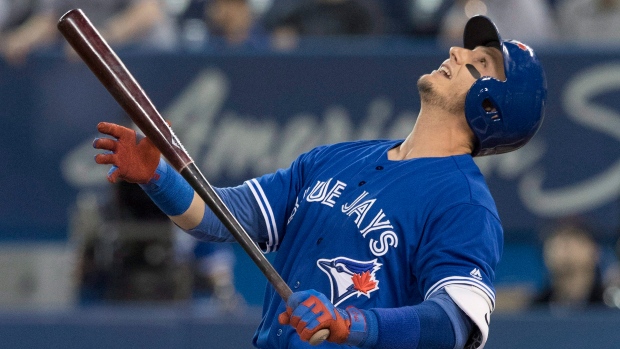
It’s been more than four months since the Blue Jays flew their separate ways for the winter when a disappointing 76-win season came to an end on the first day of October.
Since then, general manager Ross Atkins has been busy tinkering and adjusting an aging and injury-riddled roster.
The big changes most fans were hoping for? Not happening.
Instead, there’s been a focus on not only depth at the big-league level, but overall depth throughout the organization.
While that has been accomplished to a certain degree, the question everyone is asking is: Are the Blue Jays a contender again?
After all, that is the stated goal of the front office.
The answer probably depends on your definition of a contender, but once you factor in the return to health of a number of key players, projection models see the current roster landing in the range of 84 wins, which is to say they’re a fringe wild-card contender.
With pitchers and catchers reporting to Dunedin on the horizon next week, we’ll delve into each area of the roster this week and try to answer some pressing questions that will be facing the Jays in 2018.
MONDAY: Infield
TUESDAY: Outfield
WEDNESDAY: Bullpen
THURSDAY: Rotation
FRIDAY: Outlook for 2018
How many games can Russell Martin catch at the age of 35?
Prior to last season, you have to go all the way back to 2010 to find the last time Martin played fewer than 111 games.
Two DL stints – one due to a nerve issue in the neck/shoulder area of his catching hand and the other with a left oblique strain – ended that run, as he caught 81 games and played only 91, just the second time in 12 seasons he’s failed to reach 100 games.
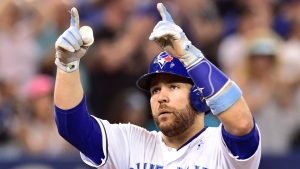 When he was on the field, Martin was acceptable offensively, especially for a player donning the tools of ignorance on a regular basis, with the same 100 Weighted Runs Created Plus (wRC+) he posted in 2016.
When he was on the field, Martin was acceptable offensively, especially for a player donning the tools of ignorance on a regular basis, with the same 100 Weighted Runs Created Plus (wRC+) he posted in 2016.
Defensively, Martin’s ability to work with the pitching staff and lead are hard to quantify, but he threw out just 12 of 60 base stealers in 2017 to sit 26th overall among catchers at just 20 per cent.
Martin will turn 35 on Feb. 15, and it’s easy to wonder if he can continue to handle a 120-game workload behind the dish.
The answer is probably no, leaving the depth chart behind him of some importance.
Currently, Luke Maile and his .146/.176/.231 slash output are in line to be the backup, but the front office is convinced a mid-season knee injury affected the 27-year-old at the plate and they loved hearing the pitching staff rave about his defensive work as he gunned down 35 per cent of the runners who tried to steal on him.
The most interesting part of the catching depth chart, however, are the two youngsters who were added to the 40-man roster this winter.
Danny Jansen’s breakout season in 2017 positioned the soon-to-be 23-year-old as the catcher of the future, and he’ll be in line for everyday at-bats at Triple-A Buffalo, where he slashed .328/.423/.552 in 78 plate appearances to finish off the season.
If Martin, who has two years remaining on his contract at $20 million per season, were to land on the DL again, Jansen could get an extended run, rather than turning to Maile full time.
There’s also another soon-to-be 23-year-old in Reese McGuire, who has MLB-ready defensive skills, but will have to prove he can hit in order to avoid a Maile-type backup profile.
KEY STAT: Jays catchers totalled 0.2 WAR in 2017, the fifth-worst mark in baseball.
Who’s the Opening Day second baseman?
After watching Devon Travis fail to stay even remotely healthy for the third straight year, Atkins made sure to have a contingency plan in place.
The word contingency is key there because if Travis is fully healthy entering the season off his latest right knee surgery – Travis, himself, recently said he should be ready to go for spring training – he’ll likely get the first crack at another everyday role.
Why? All you need to do is look at his month of May last year for that answer. 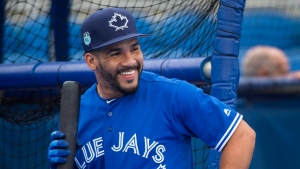
In 26 games, Travis led the league in doubles and slashed .364/.373/.646.
If healthy, the man can rake.
The Jays would love for Yangervis Solarte, acquired from the San Diego Padres, to fill a super-utility role, as he’s capable of playing all four infield positions as well as a little bit of outfield.
There’s also 2016 National League all-star Aledmys Diaz, acquired from the St. Louis Cardinals with a similar second/short/third utility role in mind, but he can be optioned to Triple-A to start the season.
The Solarte/Diaz duo is a significant upgrade over the depth they boasted last year in Ryan Goins and Darwin Barney.
KEY STAT: Jays second basemen managed to post a negative WAR at minus-0.8 last season, second-worst in all of baseball.
What can be expected of Troy Tulowitzki?
In 2013-14, Tulowitzki posted back-to-back five-plus WAR seasons inside the hitter’s haven that is Coors Field.
That version is never going to return.
But Tulowitzki is a curious case heading into 2018 because no one’s really sure where things are headed, other than not up.
 After a 2.9 WAR season in his first full campaign in Toronto in 2016, Tulowitzki was a mess in every way last year.
After a 2.9 WAR season in his first full campaign in Toronto in 2016, Tulowitzki was a mess in every way last year.
He couldn’t hit early on, and then landed on the DL with a hamstring strain.
When he returned, he still couldn’t hit, before an ugly ankle injury on a play at first base ended his season two months early.
Through all of that, the most concerning part was Tulowitzki’s stellar defensive reputation taking a nosedive.
The contract – he’s guaranteed $58 million through 2020 – isn’t pretty, but no one saw the defensive regression coming at the same time as the offensive decline.
Maybe the leg injuries affected him more than we know while he was on the field, maybe not.
The only thing the Jays can do is cross their fingers and hope he returns to league-average production in his age-33 season.
KEY STAT: Continuing the theme, the Blue Jays totalled negative WAR from the shortstop spot at minus-0.5 last season, 29th-best in baseball.
Can Justin Smoak do it again?
Finally, we arrive at a player who exceeded expectations last season. There sure weren’t many of them.
Smoak’s breakout campaign garnered him his first all-star nod in his age-30 season, and he proved to be one of the biggest bargains in baseball for $4.125 million, the same amount he’ll cash in 2018.
There’s also a $6 million club option on the table for 2019, further enhancing Smoak’s value.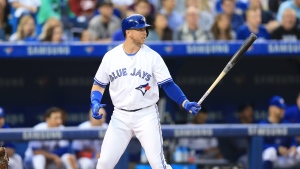
But that’s only if he proves his .270/.355/.529 slash line with 38 home runs is real.
The swing metrics and supporting numbers suggest Smoak’s improvements were legit, but his slow second half and .183 batting average in September are cause for concern.
Since they didn’t make huge improvements to an offence that scored just 4.3 runs per game, the Jays are counting on the same sort of middle-of-the-order production out of Smoak.
KEY STAT: Only six players in baseball hit more home runs than Smoak’s 38 last season.
How will the Josh Donaldson contract saga unfold?
There is no question what Donaldson will bring to the box score. It’s MVP-level production.
There is a question, however, of which uniform Donaldson will be wearing when he’s putting up those numbers.
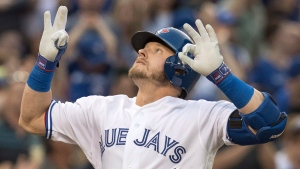 The Blue Jays are faced with a tough situation when it comes to their best player, as he’s content to play out his final year of team control on an arbitration record $23-million deal, knowing free agency beckons next winter.
The Blue Jays are faced with a tough situation when it comes to their best player, as he’s content to play out his final year of team control on an arbitration record $23-million deal, knowing free agency beckons next winter.
There hasn’t been a whole lot of time spent on a contract extension up to this point, and that likely has a lot to do with the fact Donaldson is heading into his age-32 season with visions of breaking the bank.
Atkins’ plan to contend in 2018 muddies the situation with even more variables, especially if the Jays start the season hot and actually look the part of contender.
If they falter, it’s an easy decision to put Donaldson on the market and see what offers come in prior to the July 31 trade deadline.
KEY STAT: Over Donaldson’s three seasons in Toronto, he’s piled up 21.4 fWAR to rank third in baseball behind Mike Trout (25 WAR) and Kris Bryant (21.6 WAR).


